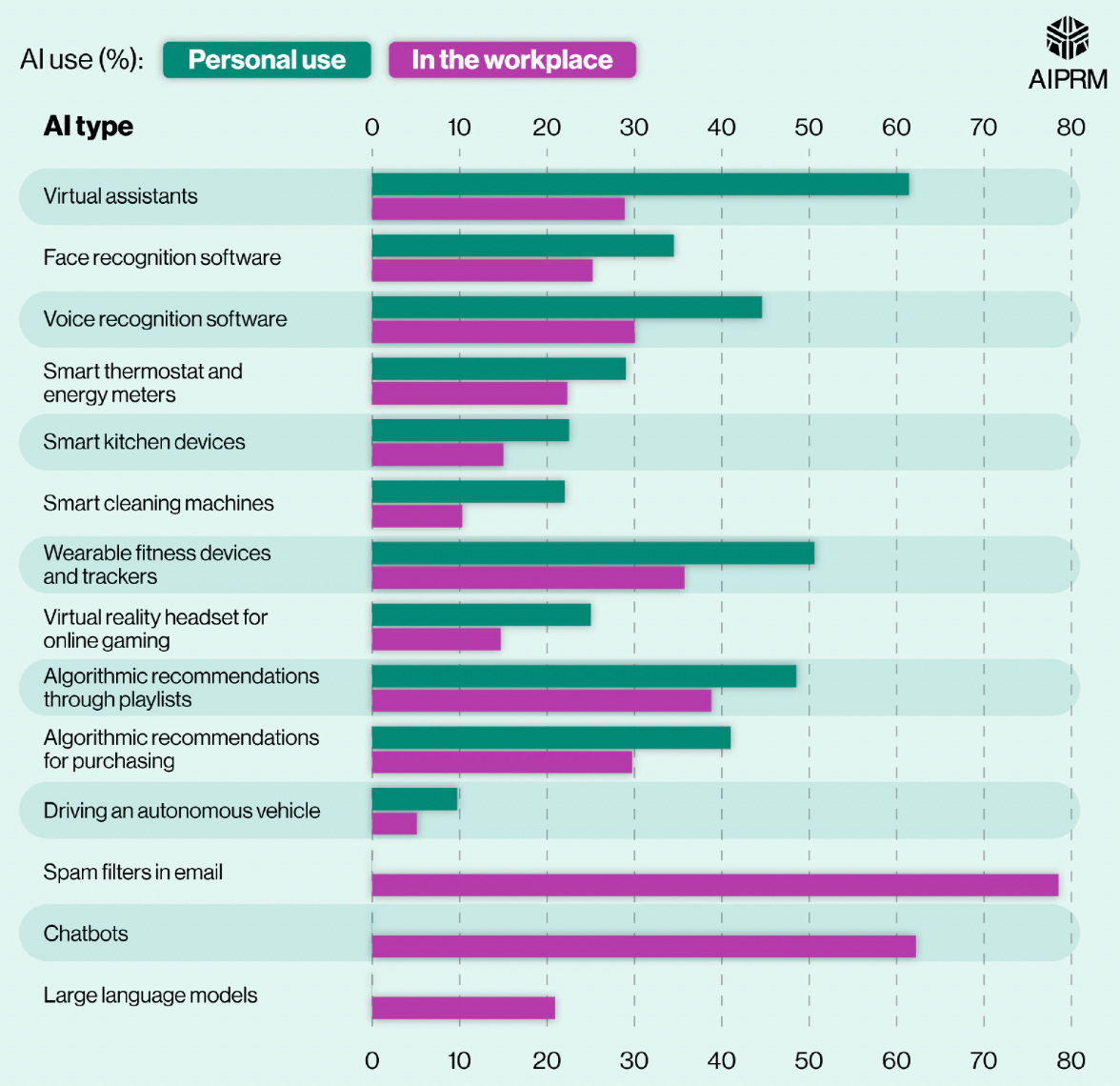

Discover more from Yaro on Ai and Tech Trends
Get in Front of 50k Tech Leaders: Grow With Us
Happy Monday Team,
What do you use AI for? Share your experiences in the comments section below. Today we are sharing the most popular uses of AI and exploring its impact on the energy grid and also how generative AI is reshaping IT economics. Additionally, check out our AI-powered selfie and avatar tools section. Let's dive in!
📰 News and Trends.
How Generative AI Is Reshaping IT Economics.
Powering the Future of Tech - The Energy Challenge.
🧰 AI Tools (Avatars, Selfies, and More)
AI Usage Trends.
📰 AI News and Trends
A large-scale industry has evolved to get Nvidia’s most cutting-edge chips to Chinese buyers, via a network of smugglers using shell companies and phony data centers (TheInformation)
Marketing firms use artificial intelligence to help analyze influencers and predict whether they will opine about the election (NYT)
AI Wants to Count Your Calories. Researchers are developing tech to analyze consumption by the bite, to track nutrition while you eat (NYT)
Record Label Universal Music and Meta Announce ‘Expanded Global Agreement’ for AI, Monetization, and More (Variety)
🌐 Other Tech news
Microsoft researchers report Iran hackers targeting Trump's presidential campaign before the election (Reuters)
Uber highlights autonomous vehicle efforts now that Tesla’s in its rearview mirror (TC)
Former Twitter Board Member Sues Elon Musk’s X for $20M (NYT)
Maduro, alleged president of Venezuela, says he will block X in Venezuela for 10 days, after a spat with Musk over a contested election (CNN)
How Generative AI Is Reshaping IT Economics.
A Gartner's analysis suggests that while generative AI (GenAI) will drive up spending on enterprise software, it may not necessarily boost profits for most companies involved in software development. The forecast for IT spending in 2024 is set to increase by 7.5% globally, reaching approximately $5.26 trillion. Notably, spending on data center systems is expected to significantly rise by 24.1%, largely driven by the demands for GenAI processing power.
However, despite the surge in spending, the benefits may not be evenly distributed. Most software companies will find themselves needing to integrate GenAI into their products by the end of 2025 to stay competitive. This urgency does not leave them sufficient time to develop their own GenAI solutions, forcing many to rely on third-party GenAI providers. This reliance transforms GenAI into a form of "tax", where additional revenue generated from integrating these AI features might simply cycle back to the GenAI model providers, rather than leading to substantial profits for the developers themselves.
In essence, while the integration of GenAI is pushing up software spend, it might lead to a scenario where only a few players who provide these foundational GenAI models or those who can afford the infrastructure investment in GenAI-optimized servers might see significant profit increases. This situation creates a bottleneck where the real beneficiaries of the surge in software spend might be limited to those who already dominate the trend.
Looking forward, the influence of GenAI on IT infrastructure and software development is expected to reshape investment priorities, focusing increasingly on cloud services, data center upgrades, and advanced server setups to handle more complex, data-intensive tasks required by GenAI applications.
Powering the Future of Tech - The Energy Challenge.
The rapid expansion of artificial intelligence (AI) and data centers is significantly increasing the U.S. demand for energy, presenting both challenges and opportunities for the tech industry and environmental sustainability.
Rising Energy Demands and AI Expansion
Data centers operated by leading tech firms like Google, Amazon, and Microsoft are major energy consumers, accounting for over 4% of U.S. electricity use in 2022. This figure is projected to rise to 9% by 2030, stressing the aging U.S. power grid and escalating the country's electricity needs.
Environmental Impact and Sustainability Efforts
The demand for energy by these data centers leads to higher emissions, with activities such as a ChatGPT query consuming nearly ten times the electricity of a typical internet search. Despite efforts to use clean energy, these centers still rely significantly on fossil fuels when renewable sources are unavailable.
Strategic Responses to Energy Needs
U.S. Energy Secretary Jennifer Granholm has assured that the country can meet the increased electricity demands. Significant investments in renewable energy are underway, aiming to deploy large-scale clean energy and storage solutions. Innovations like Google's partnership with Fervo Energy to develop geothermal power, which currently makes up less than 1% of U.S. electricity but could potentially supply up to 20% of the U.S. electricity grid, highlight the move towards more sustainable energy sources.
Infrastructure and Future Prospects
The Department of Energy is actively working to enhance transmission lines and implement more efficient technologies to connect data centers to renewable energy sources. These developments are crucial as tech companies like Google plan to eliminate the use of coal and gas in their operations by 2030, aiming for more reliable energy solutions that operate continuously.
This nexus of technology growth, energy demand, and sustainability underscores the critical need for innovative solutions to ensure that the burgeoning AI sector supports environmental goals while continuing to drive technological advancement. The potential for upcoming major announcements could signal significant shifts in how tech companies address these challenges, aiming to maintain the U.S. as a leader in both technology and eco-friendly innovation.
🧰 AI Tools
Avatars / Selfies and More.
NeuralStudio - Generate images or avatars using text prompts.
Theoasis - Seamlessly integrate accurate dictation across all your macOS applications.
Gemsouls - Create virtual characters with voice and text prompts.
Ready Player Me - Integrate customizable avatars into your game or app in minutes.
PictoDream - AI solutions for any case.
FRENZ Brainband by Earable - Silence your thoughts and drift into a deeper sleep. —AI-powered, scientifically-backed sleep tech transforming restless nights into restful slumber. Exclusive savings with code 'celis'!*
Download over 500+ Tools free here.
AI Usage Trends.
Emotional Connections: Two years after the generative AI boom initiated by ChatGPT in late 2022, the anticipated productivity gains are largely absent. However, an unexpected development is the formation of emotional bonds between users and AI systems. Users increasingly view AI as friends, lovers, mentors, therapists, and teachers, potentially leading to deep emotional reliance, especially with more emotive AI models like OpenAI’s GPT-4o which is warning that its voice mode is addictive.
Creative and Recreational Use: AI is predominantly utilized for creative tasks such as composing texts, brainstorming, and general information queries. This aligns with AI's strength in generating content where factual accuracy is less critical, making it suitable for creative composition and recreational activities.
Problematic Engagements: The second most popular use of AI involves sexual role-playing, indicating a controversial aspect of AI engagement that might not align with initial investor expectations of productivity-oriented applications.
Productivity Challenges: Productive applications, like code generation and online search, face significant hurdles due to AI's tendency to "hallucinate" or present incorrect information, leading to trust issues and reliance problems.
Regulatory Concerns: Experts argue the need for smart regulation to manage "addictive intelligence" in AI, preventing dark patterns that make users overly dependent on AI interactions.
Emerging Research and Developments:
AI in Safety: Initiatives like the UK's Safeguarded AI project, backed by AI luminary Yoshua Bengio, aim to ensure AI safety by embedding quantitative safety checks into AI systems, potentially preventing AI-induced catastrophes.
AI in Robotics: Research such as Google DeepMind's project demonstrates AI's expanding capabilities, with a robot trained to competently play table tennis against humans, highlighting progress toward robots performing complex tasks safely in real-world settings.
Market and Industry Implications:
AI Bubble Concerns: Despite a recent downturn in tech stocks and skepticism about AI's immediate potential, the debate continues with arguments.
Subscribe to Yaro on Ai and Tech Trends
Stay on top of the AI and tech trends in 4 Minutes. Embrace the future of tech and digital economies. Join our vibrant community now!





